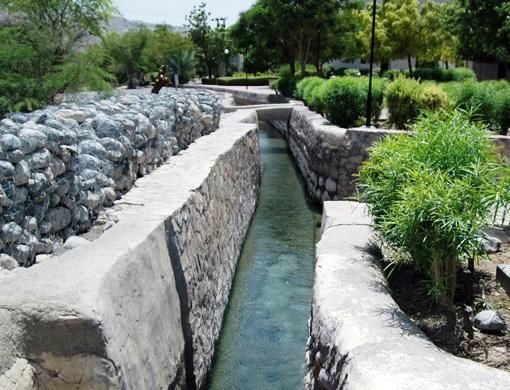Muscat: Extravagance is forbidden in Islam and it is even more applicable to water, especially in Oman, where scarcity of water is a major issue.
Thus, the government makes every effort to conserve water and the centuries-old ingenious system of aflaj comes in handy in their efforts.
"Falaj (singular for aflaj) is an amazing piece of engineering that reflects advanced techniques and skills of Omanis of yore," Zahir Bin Khalil Al Sulai-mani, Director General of Water Resources Affairs, told Gulf News.
He pointed out that to preserve these aflaj, 'the government spends one million Omani riyals every year.'
Archaeological evidence suggests that falaj, which in classical Arabic means to divide into shares and equitable sharing of scarce resources to ensure sustainability, existed in the extremely arid area of Oman since as early as 2500 BC.
"The oldest aflaj, the ruins of which can be found in the vicinity of Bahla, are believed to be 2,500 years old," the Ministry of Regional Municipality Environment and Water Resources (MREWR) official pointed out.
Al Sulaimani said currently 4,112 aflaj exist in Oman with an annual flow of 680 million cubic metres of water. "Five of these aflaj were included in Unesco's World Heritage List this year," he said.
They are: Falaj Al Khatmeen in Barket Al Mauz, Falaj Al Malki in Izki, Falaj Daris in Nizwa, Falaj Al Jeela in Sur and Falaj Al Muatasar in Rustaq.
Al Sulaimani said that the Water Resources Department takes care of the maintenance of these aflaj. "We normally repair aflaj with concrete and cement," he said.
However, the amiable official pointed out that the traditional mortar was being used to carry out maintenance work on the five aflaj selected on the Unesco's World Heritage List.
MREWR is in direct control of the aflaj and thus have ensured that they remain a working, and viable water supply, despite drops in the groundwater table.
Justifying aflaj's section on World Heritage List, Al Sulaimani reckons: "Aflaj preserve the integrity of the entire falaj water management system."
He also feels that the aflaj system meets the criterion on the basis of its 'considerable antiquity' and its continuing socio-economic benefit. "It is an outstanding example of a type of building, architectural or technological ensemble," feels Al Sulaimani.
"We have cycle of five to seven years drought almost every five years and at that time proper management of aflaj to conserve water becomes important," believes Al Sulaimani. He also said that aflaj were the main source of irrigation water in Oman beside wells. "They are utilised in agriculture as well as for domestic use since ancient times."
"The falaj will remain the main irrigation water source despite the fluctuation in rainfall," he stressed, hoping that the citizens would join hands and avoid extravagant use of precious commodity like water.













